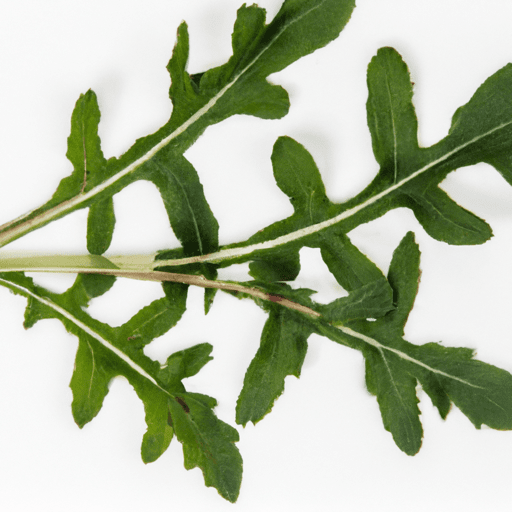All You Need to Know About Baby Arugula Leaves
Baby arugula leaves, with their vibrant green color and peppery taste, have become increasingly popular in the culinary world. These tender, delicate greens not only add a burst of flavor to various dishes but also offer a range of nutritional benefits. In this blog post, we will explore the taste profile, common uses, nutritional value, and some interesting facts about baby arugula leaves.
Taste Profile: A Delightful Peppery Kick
When you take a bite of baby arugula leaves, you will immediately notice a distinctive, peppery flavor. Its somewhat spicy taste is often described as similar to mustard greens or radishes. The flavor is potent, yet not overwhelming, making it a versatile ingredient that pairs well with a variety of other ingredients.
Common Uses in Cooking: Versatile and Vibrant
Baby arugula leaves can be used in countless culinary creations to liven up the flavors and presentation. Here are some popular ways to incorporate these delicious greens into your cooking:
Salads: Baby arugula leaves are a fantastic addition to any salad. Their peppery taste adds a punch of flavor and complements other ingredients like vine-ripened tomatoes, creamy cheeses, and tangy dressings.
Pesto: Traditional basil pesto gets a vibrant twist with the addition of baby arugula leaves. Their bold taste creates a unique and delicious pesto that pairs well with pasta, roasted vegetables, or spread on a crispy baguette.
Sandwiches: Elevate your sandwiches by adding a handful of baby arugula leaves. Their spiciness cuts through rich flavors like roasted meats, cheeses, or even spread over a layer of creamy mayonnaise.
Pizza Toppings: For pizza lovers looking to add a peppery kick, sprinkle a generous amount of baby arugula leaves over your pizza before serving. The heat from the oven will slightly wilt the leaves, intensifying their flavor.
Nutritional Value: A Powerhouse of Vitamins and Minerals
Beside its delicious taste, baby arugula leaves pack a nutritional punch. Here are some key nutrients found in this humble green:
Vitamin C: Baby arugula leaves are an excellent source of vitamin C, which helps support a healthy immune system and aids in collagen production.
Vitamin K: These greens are also rich in vitamin K, essential for blood clotting and bone health.
Folate: Baby arugula leaves provide a good amount of folate, an important B-vitamin that plays a crucial role in cell growth and development.
Calcium: Surprisingly, baby arugula leaves contain a fair amount of calcium, contributing to bone strength.
Antioxidants: Packed with antioxidants, these greens protect your body against harmful free radicals, potentially reducing the risk of chronic diseases.
Interesting Facts: Past and Present
Originating from the Mediterranean region, arugula has a long history dating back to ancient Rome and Egypt. It was prized for its aphrodisiac qualities and was even mentioned in ancient texts like Virgil’s poetry.
Arugula’s botanical name, Eruca sativa, derives from the Latin word for cabbage, indicating its close relation to other leafy greens.
The popularity of baby arugula leaves soared in the 1990s, becoming a staple ingredient in salads and other culinary creations. Its distinctive taste and visual appeal made it a favorite among chefs and home cooks alike.
Now that you know all about baby arugula leaves, it’s time to get creative in the kitchen and experiment with this versatile ingredient. Whether you’re adding it to a salad, spreading it on a sandwich, or incorporating it into a new recipe, these peppery greens are sure to enhance any dish. Enjoy the delightful flavors and reap the health benefits of baby arugula leaves!
Baby Arugula Leaves
Origin: Baby arugula leaves, or simply arugula, have their roots traced back to the Mediterranean region, specifically to areas such as Italy, Greece, and Turkey. It has been cultivated and consumed for centuries in these regions.
Common Uses: Baby arugula is versatile and commonly used in a variety of dishes. Its distinct peppery flavor adds a unique taste to salads, sandwiches, and pizzas. It pairs well with other ingredients such as cheeses, fruits, nuts, and vinaigrettes. Arugula can also be lightly cooked or wilted as a side dish or added to pasta.
Nutritional Benefits: Baby arugula leaves are low in calories and rich in vitamins and minerals. They are an excellent source of vitamin K, providing over 100% of the daily recommended intake in just one cup. Arugula is also a good source of vitamin A, vitamin C, and folate. Additionally, it contains beneficial compounds like glucosinolates, which have been associated with potential anti-cancer effects.
Unique Properties: Arugula is known for its distinct peppery and slightly bitter taste, which becomes milder as the leaves mature. Unlike mature arugula, the baby leaves are more tender and delicate, making them preferable for raw salads. Arugula leaves have a dark green color with deeply lobed or toothed edges. The plant belongs to the Brassicaceae family, along with other cruciferous vegetables like broccoli and cabbage.
Historical Significance: Arugula has a long history of consumption, dating back to ancient times. The Romans and Persians used arugula for both culinary and medicinal purposes. It was highly prized for its aphrodisiac properties and was believed to enhance libido. Arugula was also used as a natural remedy for digestive ailments and as a diuretic in traditional medicine.
These facts provide a comprehensive overview of baby arugula leaves, including their origin, common uses, nutritional benefits, unique properties, and historical significance.




Use the share button below if you liked it.
It makes me smile, when I see it.